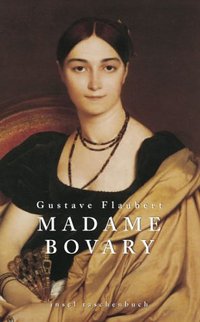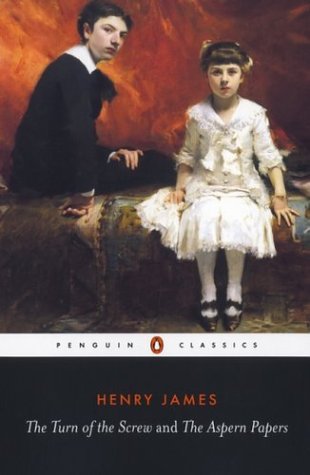Author Photo And Bio
 1. King Lear by William Shakespeare (1605). Considered one of Shakespeare’s four “core tragedies”—with Hamlet, Othello, and Macbeth—King Lear commences with Lear, having achieved great age but little wisdom, dividing his kingdom among his three daughters in return for their proclamations of love for him. Two of his daughters, evil to the core, falsely profess their love, while Cordelia, his good and true daughter, refuses his request. Enraged, Lear gives his kingdom to his evil daughters and banishes Cordelia. Lear pays a dear price for this rash act. The play systematically strips him of his kingdom, title, retainers, clothes, and sanity in a process so cruel and unrelenting as to be nearly unendurable.
1. King Lear by William Shakespeare (1605). Considered one of Shakespeare’s four “core tragedies”—with Hamlet, Othello, and Macbeth—King Lear commences with Lear, having achieved great age but little wisdom, dividing his kingdom among his three daughters in return for their proclamations of love for him. Two of his daughters, evil to the core, falsely profess their love, while Cordelia, his good and true daughter, refuses his request. Enraged, Lear gives his kingdom to his evil daughters and banishes Cordelia. Lear pays a dear price for this rash act. The play systematically strips him of his kingdom, title, retainers, clothes, and sanity in a process so cruel and unrelenting as to be nearly unendurable.
 2. Madame Bovary by Gustave Flaubert (1857). Of the many nineteenth-century novels about adulteresses, only Madame Bovary features a heroine frankly detested by her author. Flaubert battled for five years to complete his meticulous portrait of extramarital romance in the French provinces, and he complained endlessly in letters about his love-starved main character — so inferior, he felt, to himself. In the end, however, he came to peace with her, famously saying, “Madame Bovary: c’est moi.” A model of gorgeous style and perfect characterization, the novel is a testament to how yearning for a higher life both elevates and destroys us.
2. Madame Bovary by Gustave Flaubert (1857). Of the many nineteenth-century novels about adulteresses, only Madame Bovary features a heroine frankly detested by her author. Flaubert battled for five years to complete his meticulous portrait of extramarital romance in the French provinces, and he complained endlessly in letters about his love-starved main character — so inferior, he felt, to himself. In the end, however, he came to peace with her, famously saying, “Madame Bovary: c’est moi.” A model of gorgeous style and perfect characterization, the novel is a testament to how yearning for a higher life both elevates and destroys us.
 3. Leaves of Grass by Walt Whitman (1855–91). Whitman spent half his life writing, revising, and republishing this collection, which is, at heart, a love song to the idea of America. Uneven and exuberant, Whitman acknowledges that “I celebrate myself, and sing myself,” yet he celebrates all of America in his long-lined free verse. Naming himself “one of the roughs,” Whitman places the natural over the artificial, native wisdom over scholarship, and praises the working man and foot soldier as fulsomely as he does President Lincoln.
3. Leaves of Grass by Walt Whitman (1855–91). Whitman spent half his life writing, revising, and republishing this collection, which is, at heart, a love song to the idea of America. Uneven and exuberant, Whitman acknowledges that “I celebrate myself, and sing myself,” yet he celebrates all of America in his long-lined free verse. Naming himself “one of the roughs,” Whitman places the natural over the artificial, native wisdom over scholarship, and praises the working man and foot soldier as fulsomely as he does President Lincoln.
 4. To the Lighthouse by Virginia Woolf (1927). The Ramsays and their eight children vacation with an assortment of scholarly and artistic houseguests by the Scottish seaside. Mainly set on two days ten years apart, the novel describes the loss, love, and disagreements of family life while reaching toward the bigger question—“What is the meaning of life?”—that Woolf addresses in meticulously crafted, modernist prose that is impressionistic without being vague or sterile.
4. To the Lighthouse by Virginia Woolf (1927). The Ramsays and their eight children vacation with an assortment of scholarly and artistic houseguests by the Scottish seaside. Mainly set on two days ten years apart, the novel describes the loss, love, and disagreements of family life while reaching toward the bigger question—“What is the meaning of life?”—that Woolf addresses in meticulously crafted, modernist prose that is impressionistic without being vague or sterile.
 5. The Great Gatsby by F. Scott Fitzgerald (1925). Perhaps the most searching fable of the American Dream ever written, this glittering novel of the Jazz Age paints an unforgettable portrait of its day — the flappers, the bootleg gin, the careless, giddy wealth. Self-made millionaire Jay Gatsby, determined to win back the heart of the girl he loved and lost, emerges as an emblem for romantic yearning, and the novel’s narrator, Nick Carroway, brilliantly illuminates the post–World War I end to American innocence.
5. The Great Gatsby by F. Scott Fitzgerald (1925). Perhaps the most searching fable of the American Dream ever written, this glittering novel of the Jazz Age paints an unforgettable portrait of its day — the flappers, the bootleg gin, the careless, giddy wealth. Self-made millionaire Jay Gatsby, determined to win back the heart of the girl he loved and lost, emerges as an emblem for romantic yearning, and the novel’s narrator, Nick Carroway, brilliantly illuminates the post–World War I end to American innocence.
 6. Lolita by Vladimir Nabokov (1955). “Lolita, light of my life, fire of my loins. My sin, my soul.” So begins the Russian master’s infamous novel about Humbert Humbert, a middle-aged man who falls madly, obsessively in love with a twelve-year-old “nymphet,” Dolores Haze. So he marries the girl’s mother. When she dies he becomes Lolita’s father. As Humbert describes their car trip —a twisted mockery of the American road novel —Nabokov depicts love, power, and obsession in audacious, shockingly funny language.
6. Lolita by Vladimir Nabokov (1955). “Lolita, light of my life, fire of my loins. My sin, my soul.” So begins the Russian master’s infamous novel about Humbert Humbert, a middle-aged man who falls madly, obsessively in love with a twelve-year-old “nymphet,” Dolores Haze. So he marries the girl’s mother. When she dies he becomes Lolita’s father. As Humbert describes their car trip —a twisted mockery of the American road novel —Nabokov depicts love, power, and obsession in audacious, shockingly funny language.
 7. Dubliners by James Joyce (1916). Although many of these largely autobiographical stories evoke themes of death, illness, and stasis, nearly all offer their characters redemption —or at least momentary self-knowledge —through what Joyce called “epiphanies,” in which defeat or disappointment is transformed by a sudden, usually life-altering flash of awareness. The collection’s emotional centerpiece is its concluding tale, “The Dead,” which moves from a New Year’s Eve party where guests muse about issues of the day —the Catholic church, Irish nationalism, Freddie Malins’s worrying drunkenness —to a man’s discovery of his wife weeping over a boy who died for love of her. A profound portrait of identity and loneliness, it is Joyce’s most compassionate work.
7. Dubliners by James Joyce (1916). Although many of these largely autobiographical stories evoke themes of death, illness, and stasis, nearly all offer their characters redemption —or at least momentary self-knowledge —through what Joyce called “epiphanies,” in which defeat or disappointment is transformed by a sudden, usually life-altering flash of awareness. The collection’s emotional centerpiece is its concluding tale, “The Dead,” which moves from a New Year’s Eve party where guests muse about issues of the day —the Catholic church, Irish nationalism, Freddie Malins’s worrying drunkenness —to a man’s discovery of his wife weeping over a boy who died for love of her. A profound portrait of identity and loneliness, it is Joyce’s most compassionate work.
 8. As I Lay Dying by William Faulkner (1930). The Bundrens of Yoknapatawpha County have a simple task —to transport their mother’s body by wagon to her birthplace for burial. Faulkner confronts them with challenges of near biblical proportions in this modernist epic that uses fifteen different psychologically complex first-person narrators (including the dead mother) through its fifty-nine chapters. Soaring language contrasts with the gritty sense of doom in this novel that includes the most famous short chapter in literature: “My mother is a fish.”
8. As I Lay Dying by William Faulkner (1930). The Bundrens of Yoknapatawpha County have a simple task —to transport their mother’s body by wagon to her birthplace for burial. Faulkner confronts them with challenges of near biblical proportions in this modernist epic that uses fifteen different psychologically complex first-person narrators (including the dead mother) through its fifty-nine chapters. Soaring language contrasts with the gritty sense of doom in this novel that includes the most famous short chapter in literature: “My mother is a fish.”
 9. The Turn of the Screw by Henry James (1898). A young governess who is the sole caregiver for two charming children living in a remote country manor finds herself battling for their very souls. James’s story of psychological duress and obsession has been called a ghost story, a thriller, and a horror tale. But its haunting power stems less from the supernatural than from the primal fear that we can’t always protect our children.
9. The Turn of the Screw by Henry James (1898). A young governess who is the sole caregiver for two charming children living in a remote country manor finds herself battling for their very souls. James’s story of psychological duress and obsession has been called a ghost story, a thriller, and a horror tale. But its haunting power stems less from the supernatural than from the primal fear that we can’t always protect our children.
 10. The stories of Flannery O’Connor (for their unerring narrative focus) (1925–64). Full of violence, mordant comedy, and a fierce Catholic vision that is bent on human salvation at any cost, Flannery O’Connor’s stories are like no others. Bigots, intellectual snobs, shyster preachers, and crazed religious seers —a full cavalcade of what critics came to call “grotesques”—careen through her tales, and O’Connor gleefully displays the moral inadequacy of all of them. Twentieth-century short stories often focus on tiny moments, but O’Connor’s stories, with their unswerving eye for vanity and their profound sense of the sacred, feel immense.
10. The stories of Flannery O’Connor (for their unerring narrative focus) (1925–64). Full of violence, mordant comedy, and a fierce Catholic vision that is bent on human salvation at any cost, Flannery O’Connor’s stories are like no others. Bigots, intellectual snobs, shyster preachers, and crazed religious seers —a full cavalcade of what critics came to call “grotesques”—careen through her tales, and O’Connor gleefully displays the moral inadequacy of all of them. Twentieth-century short stories often focus on tiny moments, but O’Connor’s stories, with their unswerving eye for vanity and their profound sense of the sacred, feel immense.